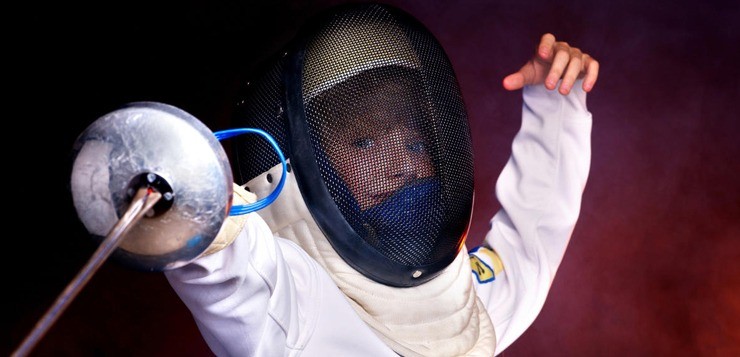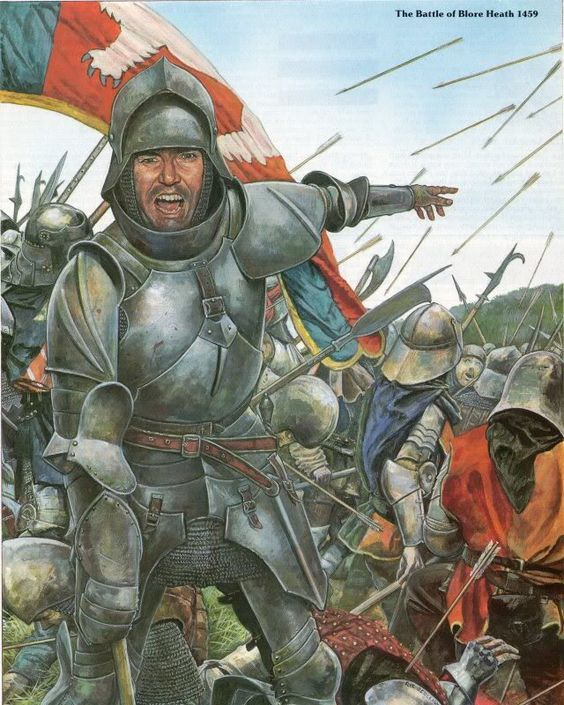Stage and sports fencing
 Sports fencing is a combat sport with knives. Fencing battle is a conditional duel on edged sports weapons, regulated by the official rules of the competition. Classical fencing, subject to the rules developed by the International Fencing Federation (FIE), the elected body governing the entire international fencing sporting life, contains the following types of fencing: foil fencing, saber fencing and sword fencing.
Sports fencing is a combat sport with knives. Fencing battle is a conditional duel on edged sports weapons, regulated by the official rules of the competition. Classical fencing, subject to the rules developed by the International Fencing Federation (FIE), the elected body governing the entire international fencing sporting life, contains the following types of fencing: foil fencing, saber fencing and sword fencing.
Rapier is a piercing sporting weapon. The use of only piercing strikes and a small affected surface (compared with other types of weapons) create favorable conditions for defense and difficulty in injecting in an attack. Fencing on rapiers at a distance much shorter than on other types of weapons, and, as a rule, do not resort to deep waste, so the fencers fight are very intense. In rapier fencing, in many cases the fencer is forced to orientate on the basis of not so much visual perceptions as tactile and kinesthetic sensations of the armed hand arising from the constant contact of the blades.
Saber – a sporting weapon, chopping and pricking. Unlike fencing with other types of weapons, saber fencing has more than various technical methods for defeating the enemy, which is explained by the ability to deliver not only injections, but also blows. Saber combat takes place at a great distance of the fencers from each other and is characterized by a certain amount of self-defense of armed hands, due to the desire to complicate the attack of the enemy by a blow to the arm. There is a battle without fencing characteristic of fencing only on piercing classic weapons of constant crossings of weapons. The lack of connection of blades and the large distance between the fencers give decisive and exceptional importance to remote playing, speed and depth of movement. Therefore, saber combat is full of large movements of fencers throughout the battlefield.
The epee is a piercing sporting weapon. Fencing with swords differs from fencing on rapiers and sabers in a greater proximity to the conditions of duel combat. This is reflected in the fact that in fencing fights with swords it is allowed to stab the enemy in any part of his body, except for the back of the head and neck, and with simultaneous injections, the defeat is counted by both fencers, regardless of which of them was responsible for this simultaneity. The sword itself is more massive than the rapier. Swing combat, as a rule, is conducted at a great distance of opponents from each other. The fencers in it strive primarily to hit the enemy in the near part of his body, i.e. in the armed hand, which is carried out in almost continuous small and precise movements of weapons, accompanied by easy maneuvering. However, this subtle game of arms around the enemy’s hands from time to time goes into long attacks with grabs and subsequent attempts to stab into the body or leg, which often result in close combat, full of the most unexpected positions, ending with injections into various parts of the body. Typically, the widespread use of injection with the opposition. Typical for a swordfight is the abundance of counterattacks in it, counter-attacks of the second intention and repeated ones – injections, due to the rules of the battle on swords, excluding the factor of tactical correctness.
All sports fencing fights are held on the battlefield of a certain size and are subject to uniform rules, requirements for weapons and protective equipment of fencers, as well as refereeing rules are strictly regulated.
One of the varieties of unsportsmanlike fencing is stage fencing, which aims to depict fencing on the stage or on the screen according to the plot of the play or script and the historical situation of the events depicted. In the repertoires of modern theaters, most of them are plays on the theme of the Middle Ages, which it is impossible to imagine without fights with edged weapons. Consequently, the actor must master the technique of fighting on swords, swords and swords or daggers, swords using a cloak. If you want to depict the battle of Greek warriors, Roman legionnaires or a gladiators’ duel, the battle of knight-crusaders or Middle Eastern warriors of the XII – XIII centuries, then you will need the ability to wield swords of various shapes and shields. If according to the plot the viewer will see the battle of the cavalry, then you can not do without sabers and peaks, etc. In addition, in addition to historical weapons, characters often use household items, such as forks or grapples, for fencing, which, despite all the “frivolity” of such “weapons”, also requires knowledge of the technique and skills of melee weapons …




